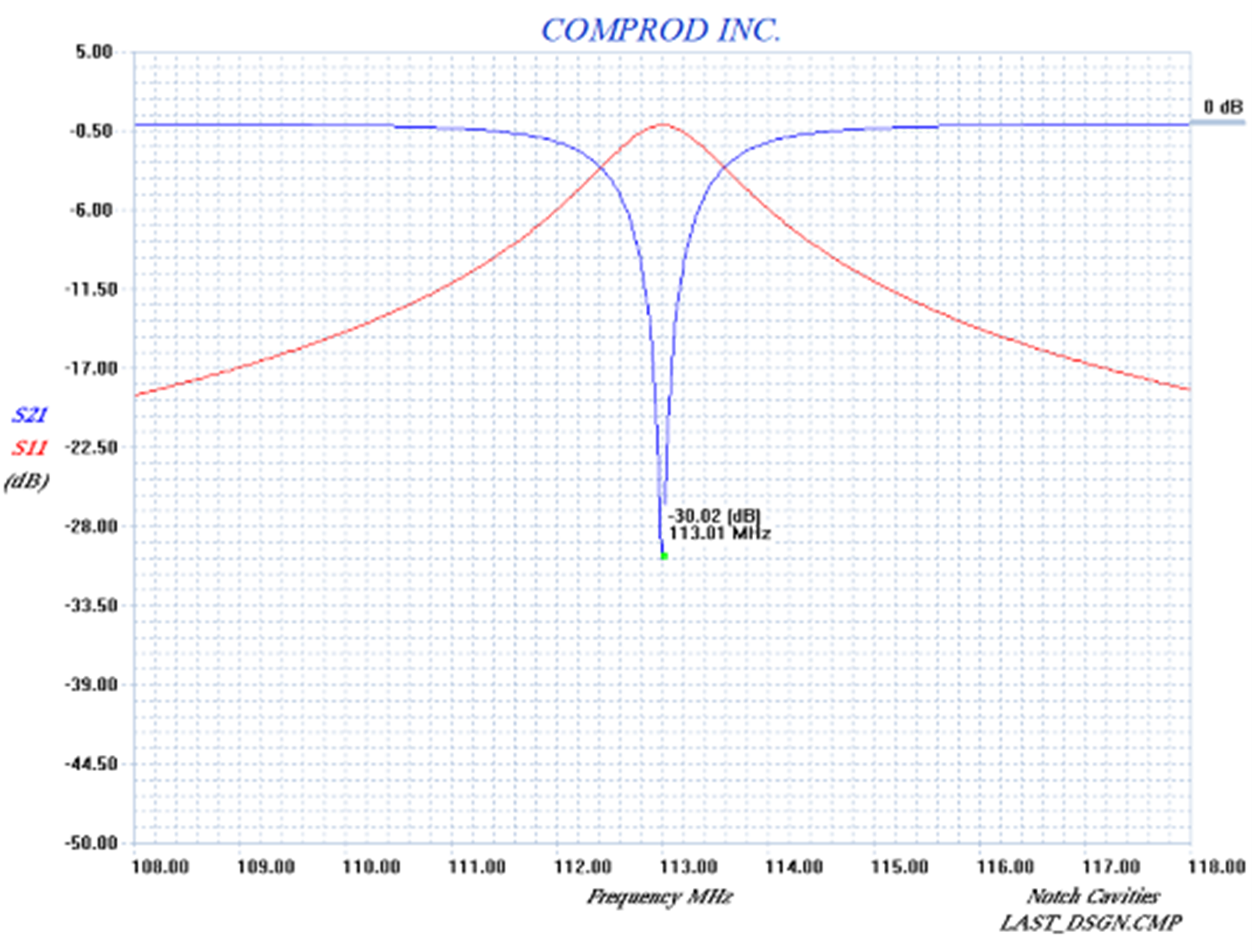- Available in single, dual or triple units
- Temperature compensated to ensure frequency stability
- High attenuation
- Adjustable loops: each cavity has a calibration index to reference insertion loss
-
 Designed to minimize interference from adjacent channels and outside systems
Designed to minimize interference from adjacent channels and outside systems -

 Designed to minimize interference from adjacent channels and outside systems
Designed to minimize interference from adjacent channels and outside systems- Available in single, dual or triple units
- Temperature compensated to ensure frequency stability
- High attenuation
- Adjustable loops: each cavity has a calibration index to reference insertion loss
-
 Designed to minimize interference from adjacent channels and outside systems
Designed to minimize interference from adjacent channels and outside systems- Available in single, dual or triple units
- Temperature compensated to ensure frequency stability
- High attenuation
- Adjustable loops: each cavity has a calibration index to reference insertion loss
-
 Designed to minimize interference from adjacent channels and outside systems
Designed to minimize interference from adjacent channels and outside systems- Available in single, dual or triple units
- Temperature compensated to ensure frequency stability
- High attenuation
- Adjustable loops: each cavity has a calibration index to reference insertion loss
-
 Designed to minimize interference from adjacent channels and outside systems
Designed to minimize interference from adjacent channels and outside systems- Available in single, dual or triple units
- Temperature compensated to ensure frequency stability
- High attenuation
- Adjustable loops: each cavity has a calibration index to reference insertion loss
-
 Designed to pass a frequency band and reject a narrow band of frequencies
Designed to pass a frequency band and reject a narrow band of frequencies- Can reject frequencies on either the high or low side of the pass frequency
- Temperature compensated to ensure frequency stability
- High attenuation to minimize desense and interference
-
 Designed to pass a frequency band and reject a narrow band of frequencies
Designed to pass a frequency band and reject a narrow band of frequencies- Can reject frequencies on either the high or low side of the pass frequency
- Temperature compensated to ensure frequency stability
- High attenuation to minimize desense and interference
-
 Designed to pass a frequency band and reject a narrow band of frequencies
Designed to pass a frequency band and reject a narrow band of frequencies- Can reject frequencies on either the high or low side of the pass frequency
- Temperature compensated to ensure frequency stability
- High attenuation to minimize desense and interference
-
 Designed to pass a frequency band and reject a narrow band of frequencies
Designed to pass a frequency band and reject a narrow band of frequencies- Can reject frequencies on either the high or low side of the pass frequency
- Temperature compensated to ensure frequency stability
- High attenuation to minimize desense and interference
-
 Designed to reject one narrow band of frequencies, while letting all others pass in the operating band
Designed to reject one narrow band of frequencies, while letting all others pass in the operating band- Can be cascaded or added to one another in order to sharpen the attenuation of the rejection curve
- Temperature compensated to ensure frequency stability
- High attenuation to minimize desense and interference from adjacent systems
- Adjustable loops: each cavity has a calibration index
-

 Designed to reject one narrow band of frequencies, while letting all others pass in the operating band
Designed to reject one narrow band of frequencies, while letting all others pass in the operating band- Can be cascaded or added to one another in order to sharpen the attenuation of the rejection curve
- Temperature compensated to ensure frequency stability
- High attenuation to minimize desense and interference from adjacent systems
- Adjustable loops: each cavity has a calibration index
-
 Designed to reject one narrow band of frequencies, while letting all others pass in the operating band
Designed to reject one narrow band of frequencies, while letting all others pass in the operating band- Can be cascaded or added to one another in order to sharpen the attenuation of the rejection curve
- Temperature compensated to ensure frequency stability
- High attenuation to minimize desense and interference from adjacent systems
- Adjustable loops: each cavity has a calibration index














